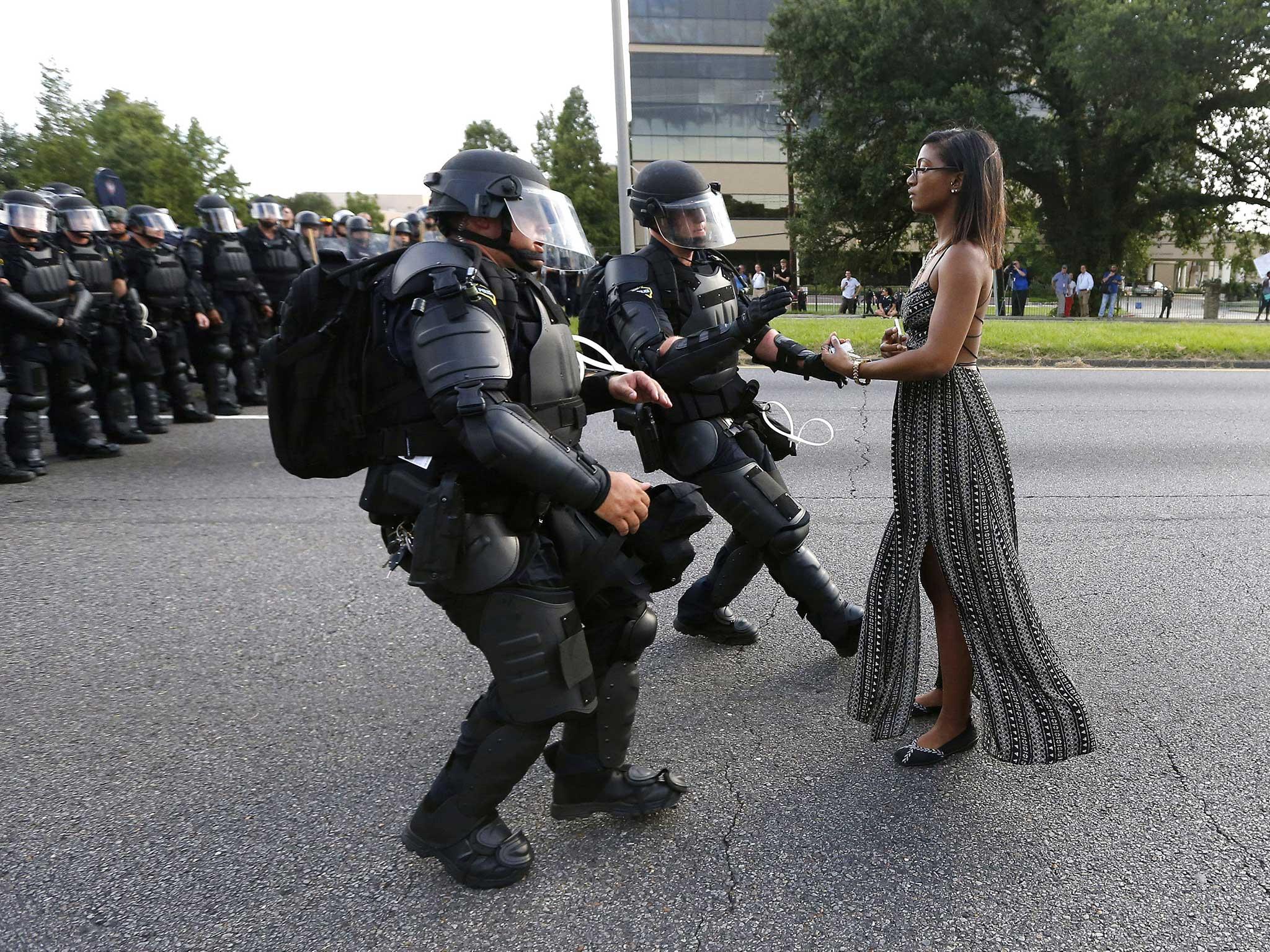Black Americans shot dead by police are twice as likely to be unarmed as white counterparts
'Our findings are suggestive of implicit bias – minorities were significantly more likely to have been fatally shot as a result of an apparent threat perception failure by officers'

Your support helps us to tell the story
This election is still a dead heat, according to most polls. In a fight with such wafer-thin margins, we need reporters on the ground talking to the people Trump and Harris are courting. Your support allows us to keep sending journalists to the story.
The Independent is trusted by 27 million Americans from across the entire political spectrum every month. Unlike many other quality news outlets, we choose not to lock you out of our reporting and analysis with paywalls. But quality journalism must still be paid for.
Help us keep bring these critical stories to light. Your support makes all the difference.
Black people shot dead by police in the US were more than twice as likely as the white people killed by an officer to have been unarmed, according to a new study which suggests there is an “implicit bias” against minorities within law enforcement.
The researchers, who studied the known fatal shootings by police in 2015, also found people from non-black minority ethnic groups were more likely to have been fatally shot than whites when they were not posing an immediate threat to the officers or other civilians.
A paper about the study in the Criminology & Public Policy journal stressed that the “overwhelming majority” of people shot dead by police had been armed with a “deadly weapon” at the time.
But 93 of the total of 990 fatal police shootings – just under 10 per cent – did not have any kind of weapon.
Fifteen per cent of black people killed were not carrying a weapon at the time, compared to six per cent of whites and 11 per cent of other minority groups.
Twenty-four per cent of the black people shot dead were not attacking anyone at the time, compared to 17 per cent of the white people and 31 per cent of non-black people from other ethnic groups.
Dr Justin Nix, of Louisville University, said: “Our findings are suggestive of implicit bias – minorities were significantly more likely to have been fatally shot as a result of an apparent threat perception failure by officers.”
The figures were based on information compiled by The Washington Post, whose journalists scoured public records, media reports and other sources in an attempt to find out the total number.
The researchers appealed to the US Government to set up an official record of police shootings, saying: “Without more comprehensive data, we simply cannot determine whether the police disproportionately use force against minorities on a national scale.”
A number of controversial shootings and deaths of black men at the hands of the police and others has sparked significant protests in the US and the Black Lives Matter campaign amid suspicions that some of the officers involved are racists.
The Bahamas government was moved to issue a warning to its young black men to “exercise extreme caution” when interacting with American police.
The journal paper said it was “possible that some police officers harbour explicitly biased attitudes toward minorities”.
However it added: “Psychological researchers have demonstrated that less conscious attitudes also influence police behaviour.”
The researchers pointed to another study which suggested police officers can “over time become unconsciously biased toward minorities through social conditioning”.
There was, they said, a “tendency to overestimate the correlation between race and crime”.
“In other words, the police, who are trained in the first place to be suspicious, become conditioned to view minorities with added suspicion,” they wrote.
The researchers suggested this could be countered by holding events attended by police officers and ordinary people, such as softball games or neighbourhood block parties “which would permit officers to interact with minority citizens in an informal atmosphere” and provide officers with “direct, positive contact with citizens”.
They also recommended the use of cameras won by police on their uniforms.
Previous research had shown “that officers wearing body-worn cameras were less likely to use force against citizens and less likely to have complaints filed against them than were officers not equipped with [them]”.
Subscribe to Independent Premium to bookmark this article
Want to bookmark your favourite articles and stories to read or reference later? Start your Independent Premium subscription today.
Join our commenting forum
Join thought-provoking conversations, follow other Independent readers and see their replies
Comments